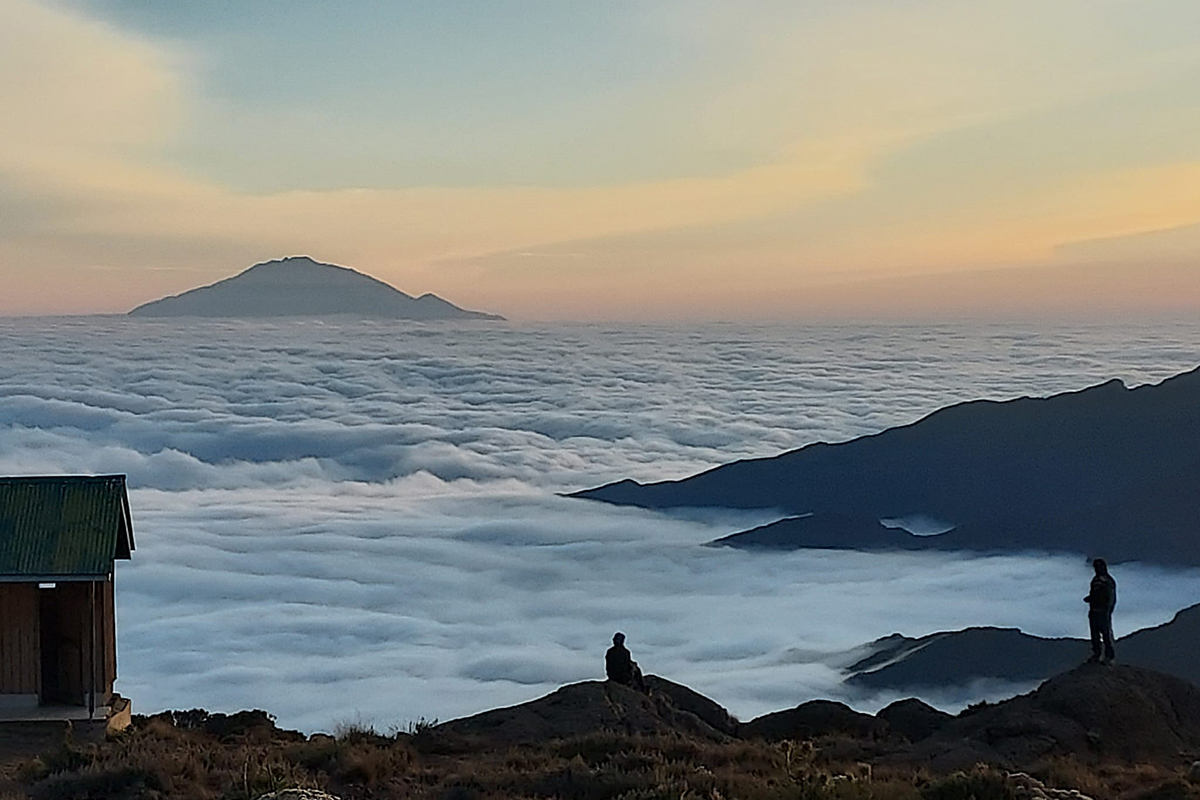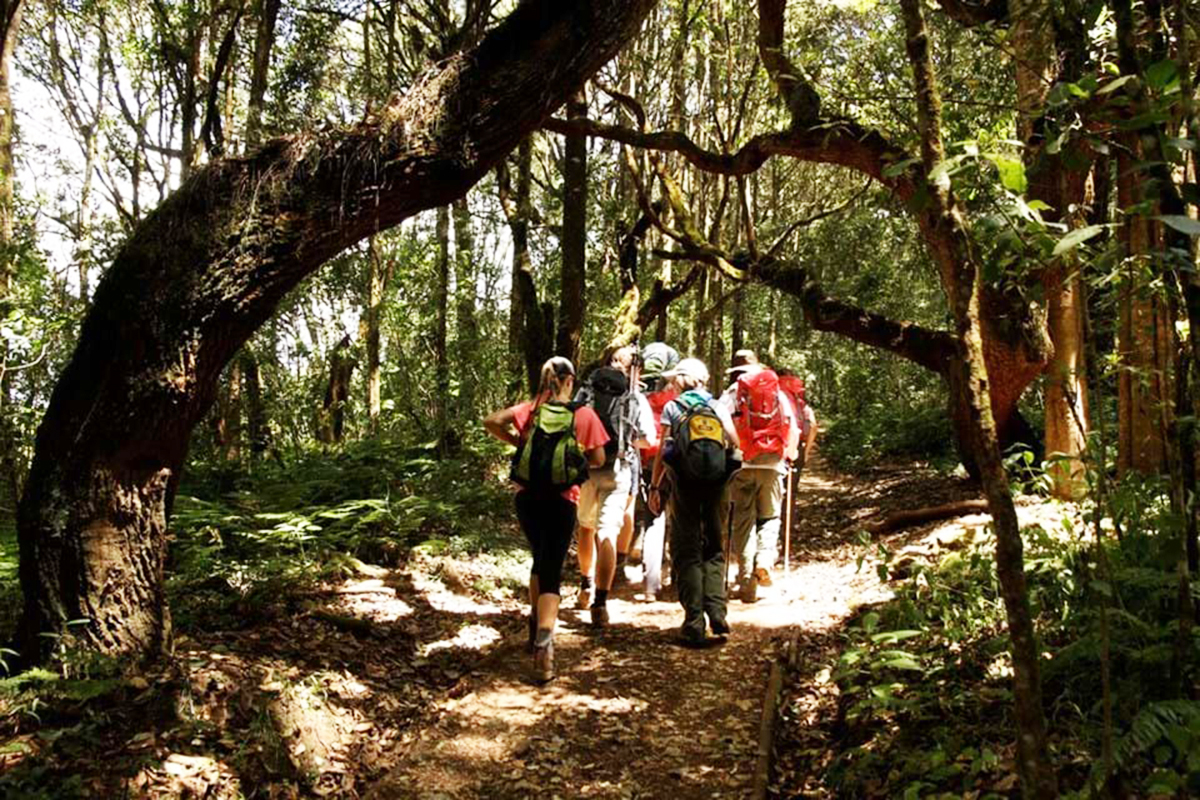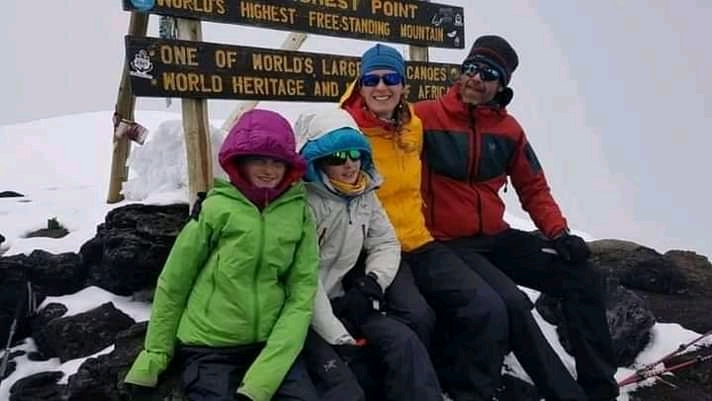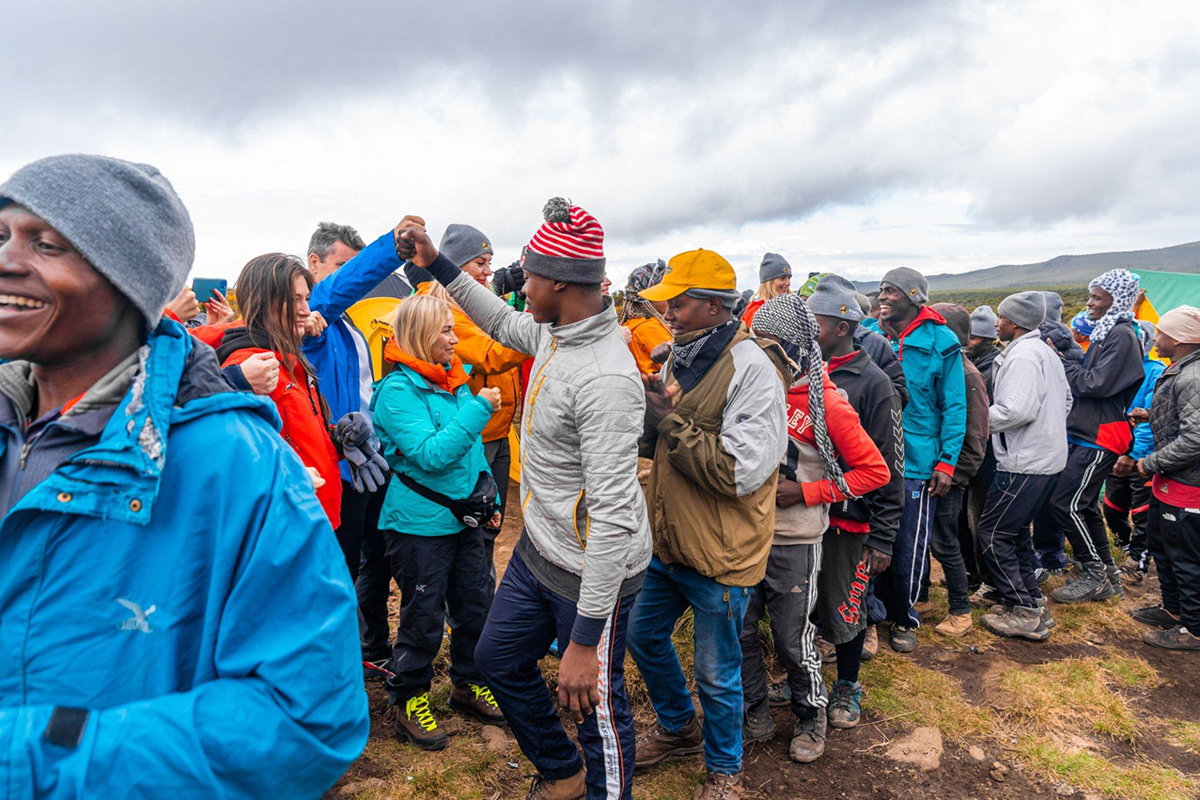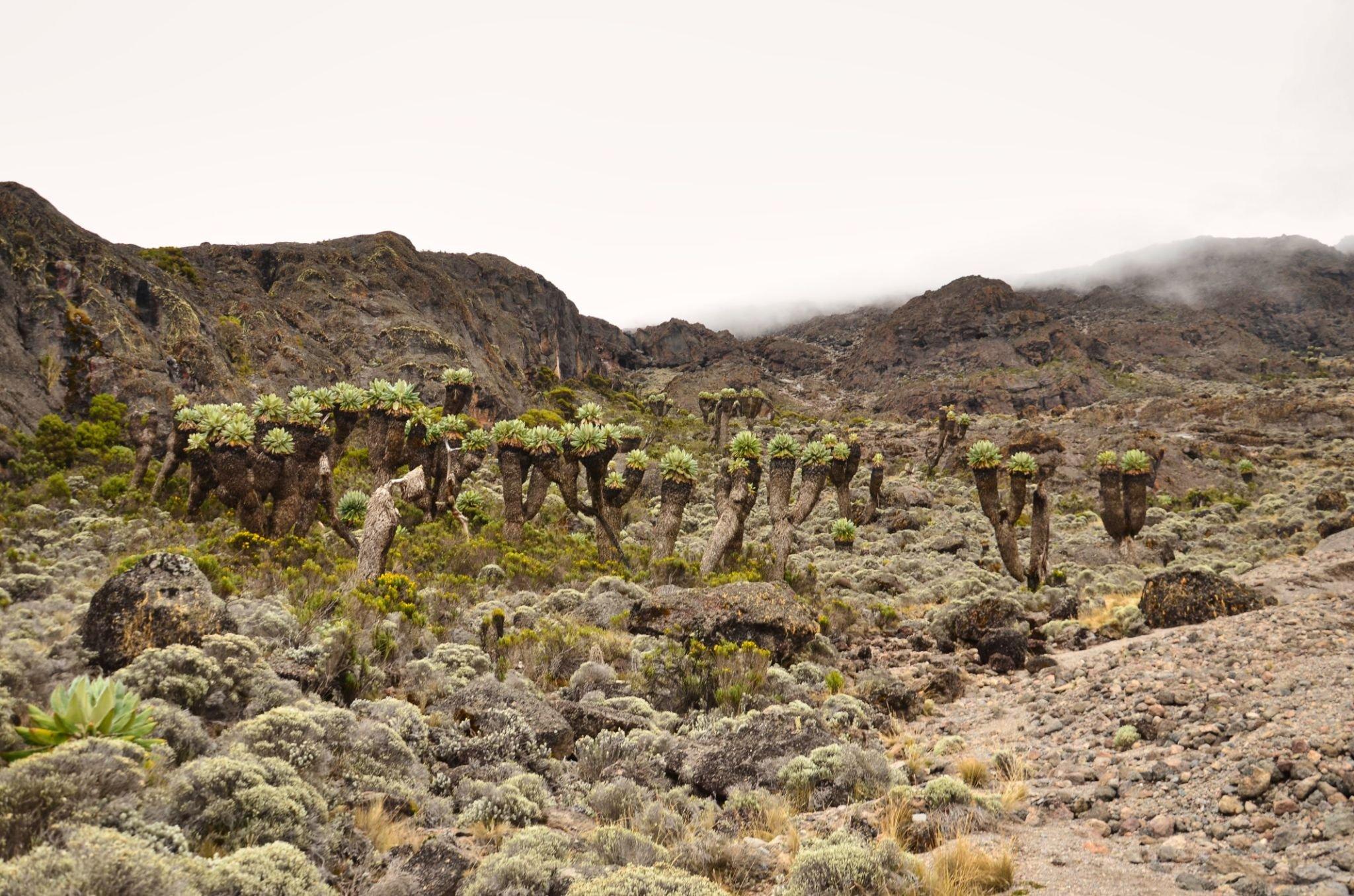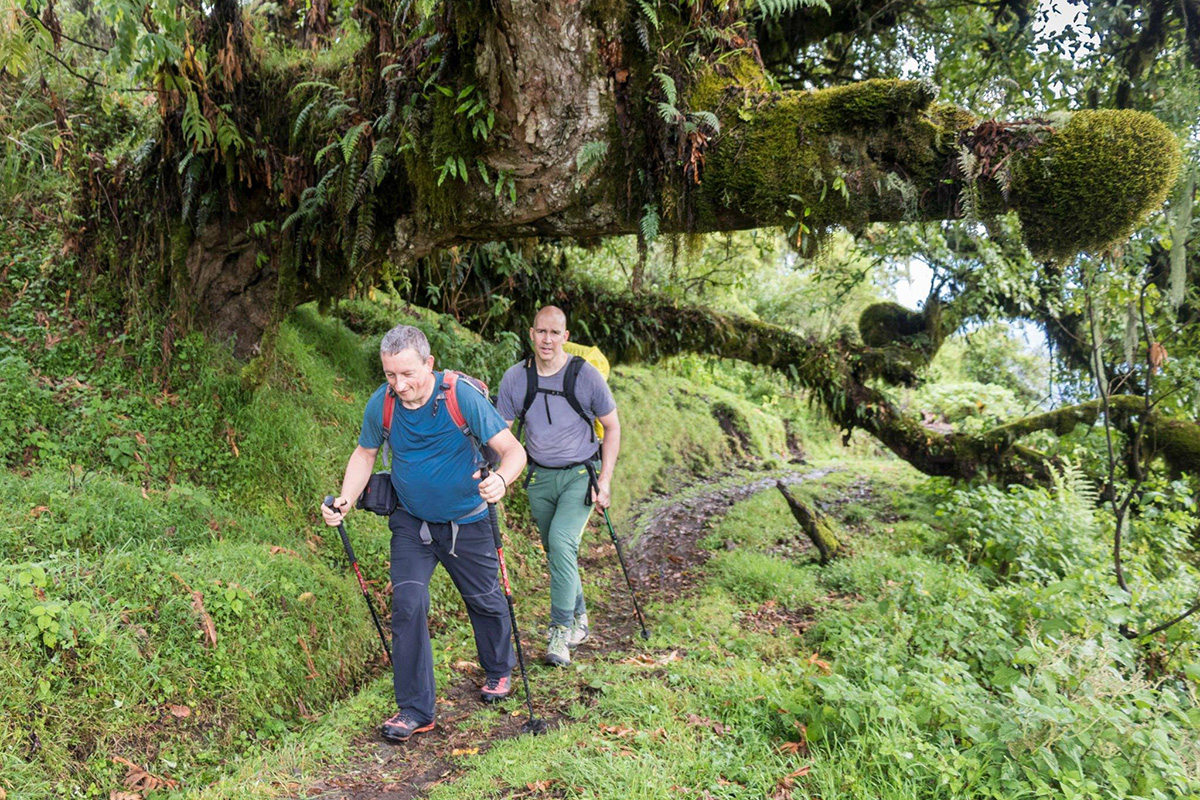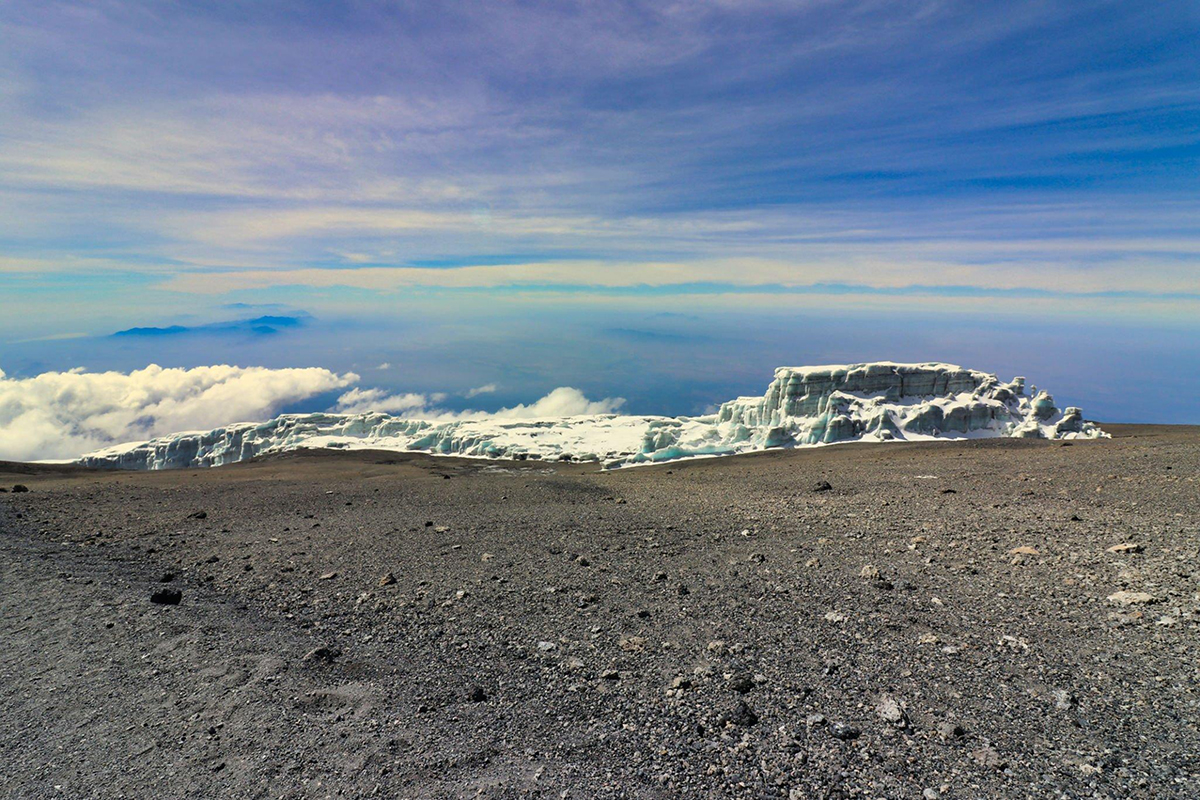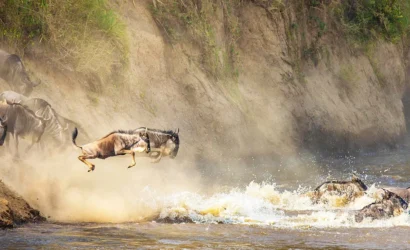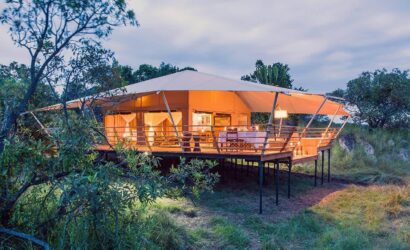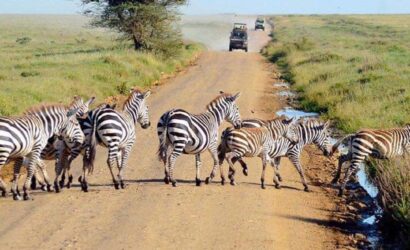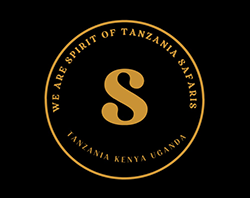5nights plus 2 nights in hotel
-
4x 4 Land cruiser
-
Mid Range Hotels and Camps
-
Arusha
-
July , August , September, December; January , Februaty
-
Kilimanjaro Climbing
-
All meals
-
English, Spanish, French, Chinese
-
2-15
-
12
-
65
Visit
TARANGIRE NATIONAL PARK & NGORONGORO CRATER
Overview
The 6-day Kilimanjaro trek via the Marangu Route, including two nights in a hotel, is a popular option that adds an extra day for acclimatization, significantly increasing the chances of a successful summit. This itinerary is known for being the only route that provides accommodation in communal huts, which offers a more comfortable and sheltered experience than camping. The tour typically spans 8 days in total, with travel and rest days bookending the 6 days on the mountain.
Highlights
- Higher Summit Success Rate: The extra day at Horombo Hut for acclimatization significantly improves your chances of reaching the summit compared to the 5-day route.
- Hut Accommodation: You stay in communal huts instead of tents, providing more comfort and shelter from the elements.
- Diverse Habitats: The trek takes you through four distinct climate zones, starting in the lush Montane Forest, transitioning to the open Heathland and Alpine Desert, and culminating in the Arctic Summit zone. This rapid change in scenery provides a varied and memorable experience.
- Gradual Slope: The path is well-defined with a more gentle incline, making the initial days of the climb less strenuous.
- Scenic Diversity: The route takes you through multiple climate zones, from lush rainforest to the arctic summit.
- Climb High, Sleep Low" Acclimatization: The optional hike on Day 4 helps your body adjust to the altitude, a proven strategy for preventing altitude sickness.
Itinerary
A guide and a mountain support crew will arrive at the hotel in the morning in order to meet you and hold a quick
briefing, after which you will travel by vehicle to Kilimanjaro National Park's eastern entrance: Marangu Gate
(1,860 m). After the quick formality of acquiring climbing permits and registering with the search and rescue
service, the group will start trekking up to Mandara Hut (2,700 m). The trekking route includes passage through the
rainforest (where tropical showers are highly probable), so we recommend you take not only spare clothes, but
also your raincoats. When you reach the camp, our mountain support crew will take care of the necessities and
prepare lunch. Throughout the entire Marangu route, you will be spending your nights in special huts.
This will be your first day at this altitude, so it is strongly recommended you heed the following instructions
from this point on:
Abstain from consuming alcohol and caffeine
Drink over 4 liters of bottled water daily (little by little, frequently)
Take a Diamox pill to help alleviate symptoms of altitude sickness. Most mountain climbers take Diamox
in the morning, before they start their ascent, in order to reduce discomfort associated with altitude
sickness. We recommend you consult your doctor prior to the trip in case of potential allergies.
At night you may experience discomfort associated with acclimatization to the high altitude: because of a
reduction in your waking breathing pattern, your body gets less oxygen than during the day. Taking
altitude into account, you may therefore start feeling sick and have a headache. Pay attention to your
own body and tell your guide if you start feeling any symptoms of altitude sickness.
Early in the morning after breakfast, the group will depart Mandara Hut to start a moderate trek towards the
second high altitude camp: Horombo Hut (3,720 m). When you reach the camp on this day, you will be treated to
views of two volcanos at once: Kibo and Mawenzi. Several hours after lunch you will have to complete an
acclimatization hike in the direction of Kibo Hut with a 200-meter gain in altitude, and then hike back down to
Horombo Hut where dinner will be prepared for you.
Hiking Time: 4-5 hours
Estimated Change: +2395ft/+730 m
Estimated Distance: 4.35 miles / 7 km
Habitat: Moorland.
This extra day and night at Horombo is ideal for body acclimatization. A hike towards Mawenzi, passing through
Zebra Rocks on the way (about 3 hours up and 1.5 hours down), is strongly recommended as it will further assist
with acclimatization.
Today’s stage is long and tough. The trail passes the “last water point” which is followed by the so-called “saddle”.
This nearly plant less plateau links the summit of Kibo with Mawenzi. Today’s destination is Kibo Hut and it should
be reached in about 5 to 6 hours. Tonight is an early night to get enough rest, for you will be woken at
approximately 23:00 hours.
Accommodation: Kibo Huts.
Meal plan: Breakfast, lunch and Dinner.
Today is the “big day” – the summit stage. You will start in the middle of the night when the lava ash is still frozen
and walking on it is easier. You will begin the long and strenuous trek to the summit in the dark. Passing the Hans
Meyer cave at 5,200 m, the climb slowly but surely goes upwards. At sunrise, you will reach Gilman’s Point (5,715
m) on the crater rim. Soon you will have forgotten the cold of the night and after another 1 to 2 hours, you will
reach Uhuru Peak at 5,895 m. Now you are standing on the “Roof of Africa”. The descent follows the same path
and the lava ash will now have thawed and allows for a fast descent. On your return to Kibo Hut, a warm meal
awaits you and you can rest a while to regain your strength. After the 1 to 2 hour break, you will be on your way
down to the Horombo Hut (3,700 m) where you will arrive in the afternoon. After an evening meal, it is early to
bed for most.
Accommodation: Horombo Huts.
Meal plan: Breakfast, lunch and Dinner.
The final hike of your wonderful 5 day Marangu route trekking begins after breakfast with a traditional farewell
ceremony from the mountain crew. The moderate descend through the heather and moor zone to the Mandara
Hut (2,700 m) where a cooked lunch awaits you. Soon you will again be in the lush tropical rainforest and 6 hours of trekking, you will be back at the same Marangu route gate 1,860 meter, where you will meet a transferring driver. At the gate, you will sign out and obtain your Kilimanjaro certificat,e then you will drive to
Arusha where you will have a long and warm shower after a tiring mountain. The rest of the day is free to rest
while enjoying your glass of wine, relax at the pool or celebrate your achievement. Meal plan: breakfast and lunch . Overnight at Lindrin lodge (Bed and Breakfast)
Cost
The Cost Includes
- Kilimanjaro trekking according to the itinerary
- Professional, English-speaking guide
- Mountain crew (cook & porters)
- Overnight stays in mountain huts
- Meals according to the itinerary
- Drinking water, tea & coffee
- All national park fees
- Transfer from the hotel to the National park gate and back
The Cost Excludes
- International Flights
- Optional activities
- Alcoholic and soft drinks
- Visa fees
- Tips
- Personal spending money for souvenirs etc.
- Travel insurance
- Tipping suggestion $10 a day per vehicle. The tip should be handed to the driver/guide at the end of the
- trip
FAQs
While the Marangu Route is often called the “easiest” due to its gradual slope and hut accommodations, the 5-day itinerary is a very rapid ascent. This short duration can be more challenging for acclimatization, increasing the risk of altitude sickness and potentially making it harder to reach the summit. The 6-day Marangu itinerary, which includes an extra acclimatization day at Horombo Hut, is generally considered to be a more manageable option with a higher success rate.
The summit success rate for the 5-day Marangu Route is significantly lower than for longer routes. It is generally cited as being between 50-60%. This is primarily due to the limited time for climbers to acclimatize to the high altitude.
The cost can vary widely depending on the tour operator, the size of your group, and what is included in the package. Prices can range from approximately $1,500 to over $2,000 per person. This cost typically includes park fees, hut fees, food, water, and the wages for your guide and porters. Additional costs to budget for include flights, travel insurance, personal gear, and tips for the trekking crew.
The most difficult part of the climb is undoubtedly summit night (Day 4). The ascent from Kibo Hut to Uhuru Peak is a long and strenuous trek in the dark, with a steep incline and challenging terrain of loose volcanic scree or snow. The extreme cold, lack of oxygen, and physical exhaustion make this leg of the journey both physically and mentally demanding.
The main difference is the addition of an extra acclimatization day. In the 6-day itinerary, you spend an extra night at Horombo Hut (Day 3), allowing your body more time to adjust to the altitude. This extra day significantly improves your chances of a successful summit, often raising the success rate by 10-15% or more.

